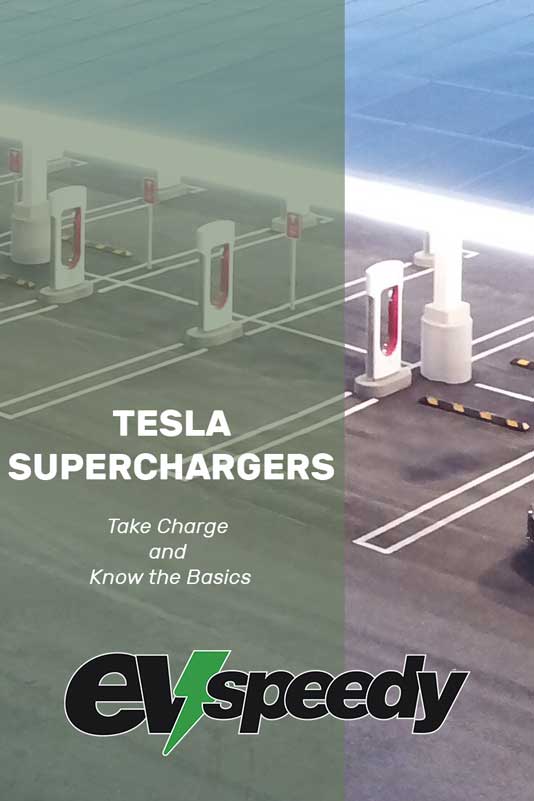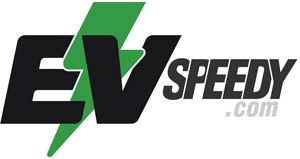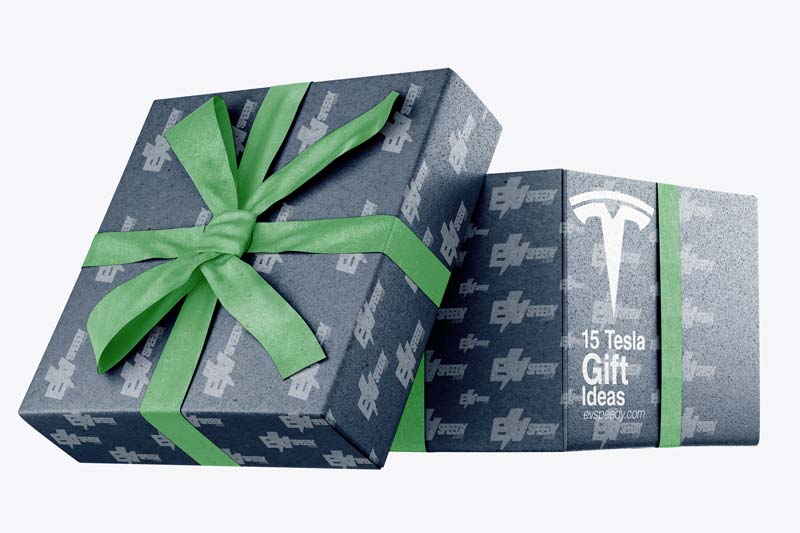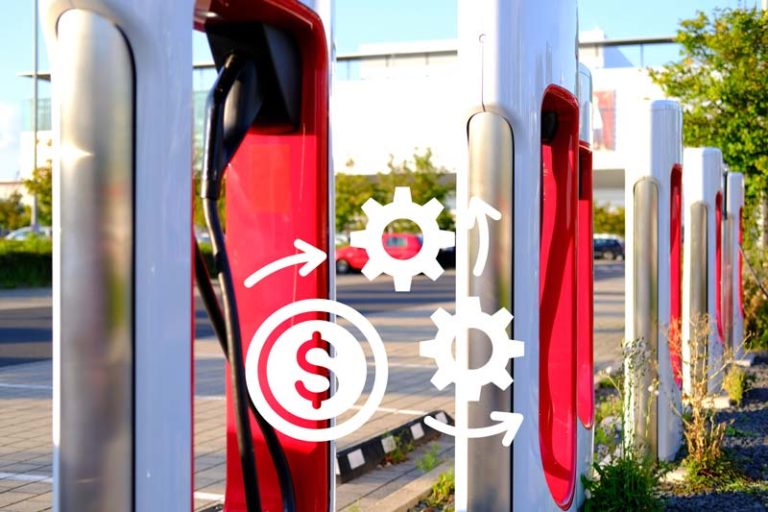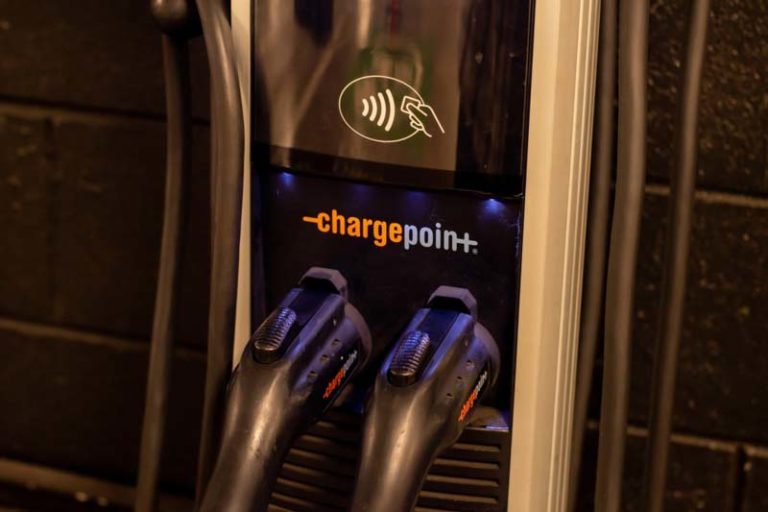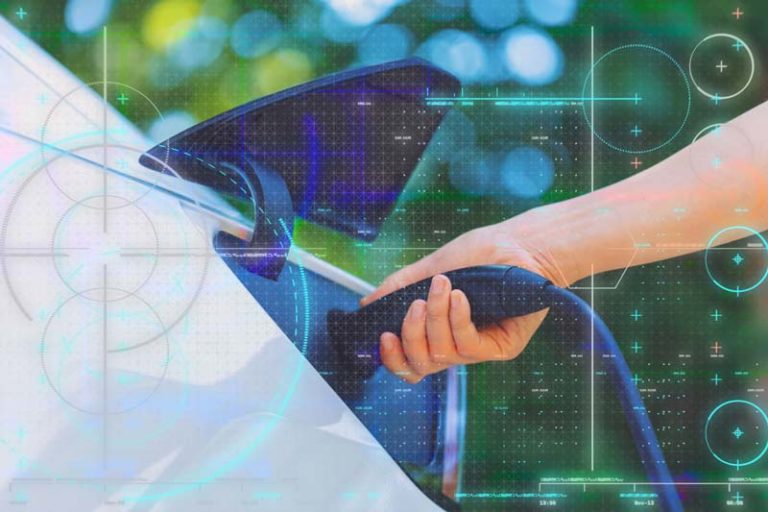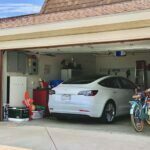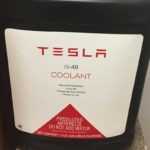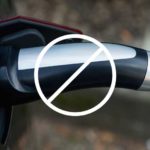The Supercharger was Tesla’s knockout punch, thanks to the rapid charging stations that juice up an electric car within minutes. But is that all there is to know?
Tesla introduced Superchargers in 2012, expanding the project as more users switched to electric power. At 250 kW, the Supercharger gives users a range of up to 75 miles (120km) in five minutes. When that moves to 300 kW, users will gain almost 100 miles (160km) of range in the same amount of time.
The Supercharger is a fascinating technological development that has revolutionized Tesla’s practicality. This piece will answer some frequently asked questions about the Tesla Supercharger to improve your understanding of this simple yet effective tool.
- What Are Tesla Superchargers?
- The Origins of Tesla's Revolutionary Supercharging Network
- Tesla Supercharging Cost and Affordability
- Is Tesla Supercharging Free?
- Do Tesla Superchargers Charge an Idle Fee?
- The Abundance of Tesla Charging Stations
- What Are Tesla Supercharger Miles?
- Do Tesla Supercharger Miles Expire?
- Do Tesla Superchargers Have a Time Limit?
- How Long Does Free Supercharging Last?
- How Long Does It Take To Charge a Tesla?
- Is Supercharging Bad for Tesla Batteries?
- Why Does Tesla Supercharging Slow Down?
- How To Use a Tesla Supercharger
- How Are Tesla Superchargers Powered?
- Do You Need a Supercharger To Charge a Tesla?
What Are Tesla Superchargers?
Tesla Superchargers are unique electric car chargers that charge Tesla batteries faster than home chargers. Tesla Superchargers use DC rapid-charging to top up car batteries, and they come in V1, V2, or V3 models, with the V3 Supercharger being the latest and most powerful of the three.
Currently, Tesla runs more than 25,000 Supercharger stations globally. In the table below, you’ll see how the different models compare in terms of power output:
| Supercharger type | V1 | V2 | V3 |
| Power Output | Limited to 150 kW | Limited to 150 kW | Limited to 250 kW |
As of writing this, there are still V1 and V2 stations still out there, but Tesla plans to upgrade all charging stations to V3 very soon. Thankfully, Tesla’s Supercharger map informs you of the speeds available at different stations.
Unfortunately, some older model Teslas are incompatible with the V3’s CCS plug. However, worry not, as Tesla will (for a fee) update your car’s software and hardware to fit with a V3 Supercharger.
Using a Tesla Supercharger is relatively easy. Just park next to the charger, plug the cable in and wait a couple of seconds for the car to start charging. The car’s onboard computer will inform you how fast your car’s charging and how long it will take for it to fill up.
Enjoy a drink or a light meal as you wait for your car to charge while keeping track of the progress via Tesla’s phone application.
This YouTube video will show you how insanely fast a Tesla V3 Supercharger fills up a Tesla battery:
The Origins of Tesla’s Revolutionary Supercharging Network
Tesla Supercharger is a fast-charging technology created by Tesla. There are over 3,000 Superchargers stations with several Superchargers each. Superchargers could (up until recently) only be used by Teslas.
With a 480-volt current, Superchargers are designed to work with all of Tesla’s cars.
Tesla introduced this technology to the public in 2012 with their Supercharger Network. As the name implies, the Supercharger Network is a global network of fast-charging stations that use Tesla’s charging technology.
The network started with six Superchargers in the US and hasn’t stopped growing since. As of 2021, there are over 3,000 Supercharger stations around the world. With an average of nine Superchargers per station, the total number surpasses 25,000.
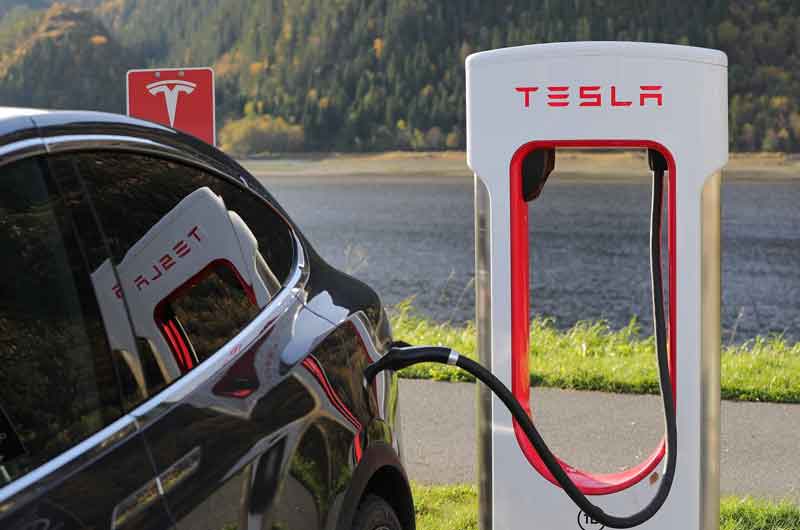
More than 1,000 Superchargers are located in North America, mainly in the US. The rest of the Superchargers are distributed through Europe, Asia, and the Pacific.
The focus of Tesla Superchargers is to allow Tesla owners to embark on longer journeys. In fact, Tesla went to the length of forbidding commercial vehicles from using Superchargers. This ban includes professionals like taxi drivers, likely in an attempt to free the way for consumer use.
Another proof that Tesla is trying to make Superchargers as convenient as possible for Tesla owners is the trip planner app for Tesla cars.
Even if you’re on the road, you can easily find Supercharger stations with the trip planner. After setting your destination, the trip planner will set a course with Superchargers along the way. It will account for other variables like elevation, driving style, and stall availability.
Pro Tip: How can you maximiase supercharging speeds and save money?
Most people obey the in-car navigation instructions, but the Tesla Navigation is quite conservative with charging planning ensuring that you never run out of any charge under any condition. To increase charging speeds and decrease costs you can try to use superchargers with about 10% of charge. You should also try to prioritize V3 chargers if possible. Then you should be able to max out the charging rate at 250kw. This way you can add about 65miles in 4 minutes, or 125 in 10 minutes. If your supercharger is billed per minute, this will save you a lot of money.
Tesla Supercharging Cost and Affordability
There isn’t a straight answer to how much Tesla Supercharging costs since prices will vary depending on where you live and what model you have. However, there are two ways in which Tesla bills owners: per kWh and per minute. The first option is the most common one.
If you’re being charged per minute, the price will vary according to two tiers:
- Tier 1: charging at or below 60kW. It costs half the price of tier 2.
- Tier 2: charging above 60kW.
Payment can also vary depending on whether you’re at peak energy usage rates. If you’re charging your Tesla at a time of day when many people in the area are using electricity, then the price of Supercharging will go slightly up.
Superchargers are considerably faster than charging your Tesla at home, which also makes them more expensive. They charge your Tesla with direct current (DC), which is much more efficient than the alternating current (AC) available in homes.
The price of charging is displayed on your Tesla’s screen. It’ll also show you an estimate of the final charges. Charging prices always include taxes and fees.
Models have different efficiencies and battery sizes, so prices vary with each one. If you take the average cost of energy in the US, we can get some estimates for each model:
| Tesla Model | Cost per Mile | Cost per 100 miles (161 km) | Full Charge |
| Model Y | $0.22 | $5.28 | $17.21 |
| Model X | $0.064 | $6.37 | $22.95 |
| Model 3 | $0.044 | $4.36 | $11.47 |
| Model S | $0.057 | $5.67 | $22.95 |
Is Tesla Supercharging Free?
Tesla Supercharging isn’t free. But some models, depending on when they were bought, carry some kind of free supercharging promotion. Free Supercharging is a somewhat confusing feature, as it has never been consistent, and many owners aren’t sure if their vehicle qualifies for free charging or not.
When Teslas first came around, free charging was much more widespread in an effort to popularize the new brand. Nowadays, free charging and referral programs are much more conservative.
Right now, there are no free Supercharging perks for buying a Tesla. However, depending on when you made your purchase, you might get unlimited free Supercharging for your vehicle.
These are the situations where you may be able to get free Supercharging:
- You have a Model S. Except for the S 40 model, all Model S Teslas have some kind of free Supercharging.
- You bought a Performance Model 3 in 2018-2019. If you bought a Performance Model 3 during this time, you get free Supercharging for the life of the EV.
- You bought a Model Y in December 2020. Some of the sales made in this period may qualify for free Supercharging.
Keep in mind that free Supercharging isn’t transferable. If you buy a second-hand Tesla, you won’t be entitled to any kind of free Supercharging.
Do Tesla Superchargers Charge an Idle Fee?
If you leave your vehicle plugged in after it’s done charging, Tesla will start counting an idle fee. The longer your Tesla stays idle, the more you’ll have to pay. If you move your Tesla within 5 minutes after it’s done charging, the fee will be removed.
Tesla charges an idle fee to keep the Supercharging experience as quick as possible. If you decide to take a walk while your Tesla recharges, be sure to keep an eye on your Tesla App notifications!
The Abundance of Tesla Charging Stations
There are 3,254 Supercharger stations distributed throughout the world as of 2021. Almost 1,200 stations are located in the US. There are another 1,000 in China and more than 600 in Europe. Tesla plans to triple the number of Superchargers over the next 2 years.
You might be thinking 3,000 isn’t that much, at least if you compare them to how ubiquitous gas stations are.
However, by 2017 there were only 1,000 Supercharger stations worldwide. That number has more than triplicated in only 4 years! With such impressive growth, you can only expect to see even more Supercharging stations in the future.
If you want to know how Superchargers are distributed worldwide, you just have to take a look at Tesla’s interactive Supercharger station map.
There are several Supercharger stations in every US state, so you won’t have to drive too much before finding one.
However, the US isn’t the only country with a decent Supercharger infrastructure. In fact, Hong Kong takes the record for the place with the highest density of Superchargers in the whole world.
There are around 1,000 stations in mainland China, but 800 of those are in Beijing, so you can’t say there’s much of a network outside the capital. Europe doesn’t fall behind either, with over 600 stations and plans to install many more.
What Are Tesla Supercharger Miles?
Tesla Supercharger Miles was a part of Tesla’s referral program. If a family member or friend purchased a Tesla using your referral link, you could have access to free miles of charging and chances to win Teslas.
Sadly, since September 18 of 2021, vehicle products are no longer a part of referral awards, including free miles.
If your referred friend made their purchase before that date, you could still get access to free miles. For each referral, both the referer and the referred customer get 1,000 free miles (1,609 km). If the order was delivered between September 10 and 30 of 2019, you could get 2,000 miles (3,219 km) per customer.
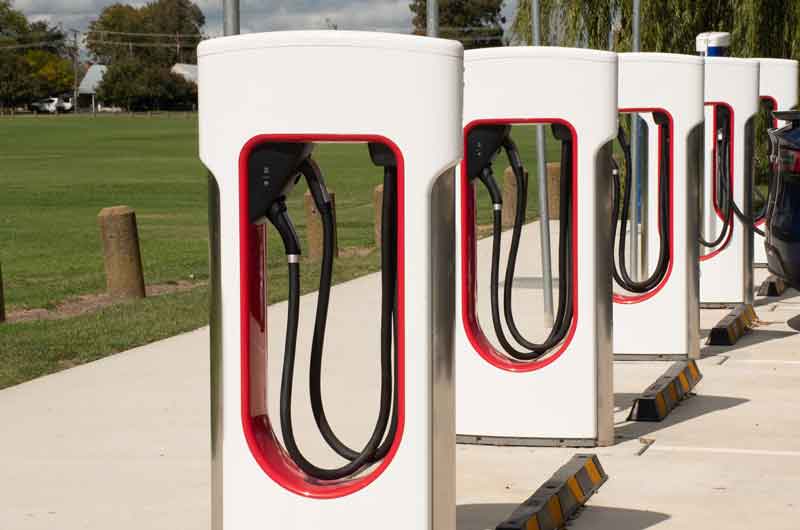
Do Tesla Supercharger Miles Expire?
Tesla Supercharger miles expire after six months, and if you fail to use them, Tesla takes them away. Then, you’ll resume paying for the supercharge service. Tesla deducts 2.5 miles (4 km) for every kWh you get. Therefore, 1000 Supercharger miles (1,609 km) are worth 400 kWh of Supercharger energy.
As an incentive to attract new customers, Tesla occasionally gives Tesla owners free Supercharger miles for referring new customers. Tesla offers you and the new customer free miles if the customer uses your referral code during purchase.
Do Tesla Superchargers Have a Time Limit?
A typical stop at a supercharging station will take longer than it would take you to fill a tank of gas. However, waiting a few extra minutes for the Tesla batteries to fill up won’t mess up your travel plans.
Tesla Superchargers do not have a time limit. The time it takes to fill the battery or fill to a certain point depends on the Supercharger’s output and the charge remaining in the batteries.
Note: Tesla charges a fee for failing to move your car after the batteries fill. The idle fee starts accumulating when supercharging ends and the charging station is at 50% capacity or more.
The idle fee per minute doubles if the charging station is at 100% capacity.
The Tesla application is your best friend if you leave the charging station with your Tesla plugged in. It will alert you when the battery fills, saving you the cost of paying the idle charge.
Tesla hasn’t set an upper limit for the idle charge. So, the longer your car remains plugged in, the deeper you’ll have to sink into your pocket.
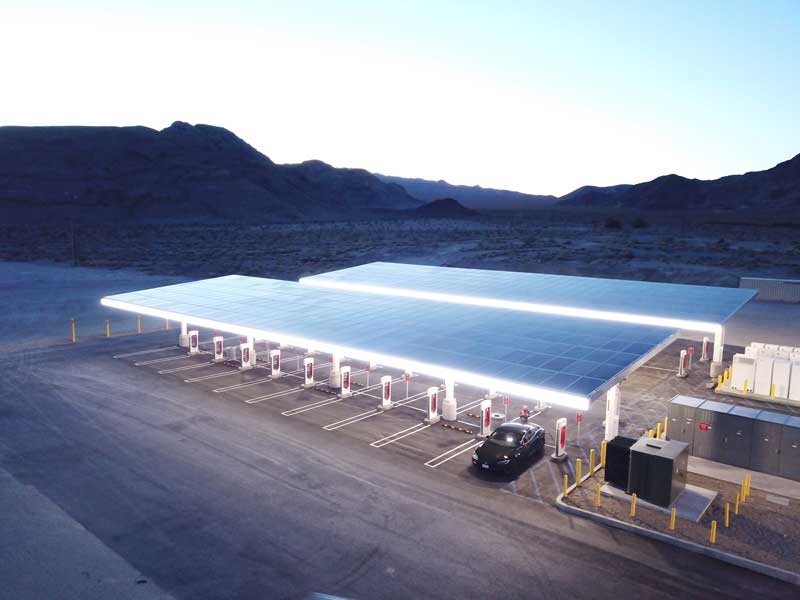
How Long Does Free Supercharging Last?
Free supercharging is another incentive that Tesla offers to new customers. It allows the customer to enjoy free supercharging for a certain period.
Free supercharging lasts for the duration provided by Tesla. The best you can get is free unlimited supercharging, but the terms vary depending on the vehicle. It’s available on some Model S and Model X vehicles and some Model 3 performance vehicles.
The Model Y didn’t get the free supercharging treatment from Tesla.
To find out whether your Tesla qualifies for free supercharging, contact Tesla.
How Long Does It Take To Charge a Tesla?
Most Tesla Superchargers can charge up to 200 miles (322 km) in just 15 minutes. That’s a huge leap when you compare it with home charging, which usually takes an hour to charge 44 miles (71 km).
Since Tesla introduced the Supercharger V3, charging has gotten even faster. While the V2 could support rates of up to 150kW, the V3 takes that number to 250kW.
The time it takes to get a full charge will depend on your car’s battery size. Here are some estimates for each model:
| Tesla Model | Maximum charge in 15 minutes | Average time for charging 20% to 80% |
| Model S | 200 miles (322 km) | 30 minutes |
| Model 3 | 175 miles (282 km) | 20 minutes |
| Model X | 175 miles (282 km) | 30 minutes |
| Model Y | 162 miles (261 km) | 32 minutes |
There are also some discrepancies between the peak numbers Tesla provides and the average charge time that consumers report.
To prevent congestion in Supercharger Stations, your Tesla may limit your charge to 80%. You can change this setting in your Teslas’ screen or the Tesla app.
In any case, your Tesla will always recommend the necessary charge to get to the next supercharger.
As an added bonus to this article, I’ve created this easy-to-use charging calculator. Simply input your model, charging wattage, and charging percentage, and you will get the estimated time it will take to charge a Tesla in terms of hours. You can play around with numbers a bit just to see how charging time changes:
The Tesla Supercharger represents one of the company’s greatest successes, as with this one innovation, they were able to solve a nagging concern among prospective buyers: range.
Is Supercharging Bad for Tesla Batteries?
Lithium-ion batteries do not enjoy rapid charging as the heat it produces degrades the system. Naturally, therefore, you’d expect supercharging to be bad for Tesla Batteries. But, luckily, that’s not the case.
Supercharging is not bad for Tesla batteries, thanks to an algorithm created by Tesla. With their technology, using a Supercharger doesn’t increase the wear rate of your battery. However, the algorithm only works if you use a Tesla Supercharger.
Using another Supercharger increases the chance of damaging the car’s battery faster than usual.
If Tesla detects the overuse of a non-Tesla Supercharger, it can limit the charging rate of a particular vehicle. It does this to ensure the longevity of its vehicles.
Pro Tip: Can you find additional shop information when clicking on Supercharger stalls?
If you’re in your car, looking at the map and touching one of the red supercharger icons, it will provide you with an additional menu telling you about the supercharger and how many stalls are available etc. You will also see some greyed out icons there like Wi-Fi, Shopping and Coffee etc. If you touch one of those greyed out icons, it will bring up the related information regarding that supercharger. For example, if you click on the coffee icon, it will show you all the coffee shops in that area around the supercharger.
Why Does Tesla Supercharging Slow Down?
Tesla batteries rarely charge consistently when using a Supercharger. Instead, the charging rate fluctuates depending on factors such as temperature and battery charge level.
Tesla supercharging slows down to protect the battery from wear and as the battery fills up. In addition, when it is too cold, the charging rate slows. Lastly, the charging rate slows as cars increase at the charging station. The slowing happens automatically, so there’s no way to bypass it.
How To Use a Tesla Supercharger
Tesla has made it very easy for owners to use Superchargers. The process only takes a few steps:
- Find a Supercharger. You can do this via the Tesla app on your phone or through the trip planner in your Tesla.
- Park in a free slot. The trip planner will try to lead you to less congested stations. Still, a congested Supercharger station might make you wait a few minutes.
- Plug the charging connector into your car’s port. The green LED on your port will flash green to indicate it’s charging.
- Wait until it’s finished. Your Tesla app will let you know when it’s ready, so you can take a stroll without worrying. The payment will be automatically processed using the payment method in your Tesla Account.
How Are Tesla Superchargers Powered?
Part of the allure of electric vehicles is that they are much friendlier to the environment than their internal combustion alternatives. However, the production of electricity leaves a considerable carbon footprint.
Tesla Superchargers are powered by local utilities. Some supercharging stations utilize solar energy, but Tesla primarily uses locally sourced electricity. However, they plan to adopt renewable energy for all their charging stations by the end of 2021.
The company is unlikely to reach that goal, but with time, Tesla will achieve its renewable energy goal.
You can download third-party apps that inform you how clean the electricity charging your Tesla is.
 You will find more infographics at Statista
You will find more infographics at StatistaDo You Need a Supercharger To Charge a Tesla?
The fact that Tesla has its own network of charging stations only makes their cars more appealing. Depending on where you live, they’re readily available and easy to use.
But what if there’s a non-Tesla charging station that’s closer to you? Are you limited to only using Tesla proprietary chargers?
You don’t need a Supercharger to charge a Tesla. Any third-party charging station will do as long as you have the right adapter. Stations labelled as “1772” or “120 volts” will work with the Mobile Connector that came with your Tesla. You can also buy a separate adapter to charge at 240v stations.
It’s a good idea to carry both the Mobile Connector and the adapter bundle in your trunk when you’re going for long road trips.
And in case you’re wondering, Tesla chargers can’t be used right now by other electric cars.
However, Elon Musk recently announced that they plan to open their Supercharger Stations for other manufacturers to use. Tesla would set a standard price, and the process would be done through the Tesla app.
In most of the world, Tesla connectors are standardized, so the transition will be easy. However, in the United States, Superchargers have a proprietary connector that’s only compatible with Teslas, so owners of other brands would need to buy an adapter.
Check out these 20 great gift ideas for yourself or a Tesla fanboy.
Contact Us if you have any questions or queries.
